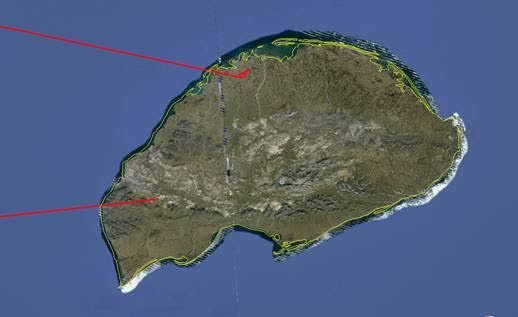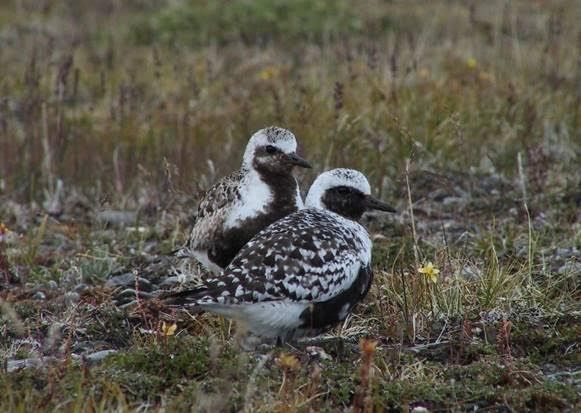This is one of the most memorable days in forty years of wader migration studies in Australia. All four of the remaining satellite-tagged Grey Plovers have reached their breeding grounds in Siberia!

Track of the SA birds to Wrangel Island
Who would have believed this successful outcome was possible just a few weeks ago when we were losing contact with several birds as they reached China?
Over the last few days all four individuals – two from South Australia and two from North-west Australia – have flown virtually non-stop some 3000km from their stopover locations in the Yellow Sea to breeding locations in Arctic Siberia. The two birds from Broome have finished up close to the coast at locations about 500km apart close to the north coast of Yakutia.

Broome birds’ breeding locations in northern Yakutia

Charlie’s likely nesting location (circled in red) in Northern Yakutia.
The two birds from South Australia initially touched down in the same areas but then, after a short stop, both proceeded to fly out over the Arctic Ocean to Wrangel Island, 71 degrees north, some 200km north of the Chukotka Peninsula in North-east Siberia. These are the first birds of any species from Australia known to visit this remote Arctic island.

Breeding Locations of SA Grey Plovers on Wrangel Island
So now, after weeks of nail-biting as the Grey Plover carrying satellite transmitters migrated northwards from Australia to, and through, the Yellow Sea, we finally have the principal answers we wanted from this Project. We know the breeding locations of four birds and we now also know that the migration route to these from the Yellow Sea was directly across Siberia and achieved without any significant intermediate stopovers. With all four birds having reached their breeding locations in the first week of June they are well placed for a successful breeding season should local weather and feeding conditions permit this.

Grey Plover on Wrangel Is. Courtesy of State Nature Reserve Wrangel Is.
It is also interesting that the birds with the most southerly non-breeding area (the South Australian birds) finished up at the northern-most breeding locations. This ‘leap-frog’ migration pattern is recorded quite commonly in waders (and many other species).
We can now expect a period of several weeks with no further significant movements of these birds. Let us hope that their satellite transmitters continue to operate and that we are ultimately able to obtain similar detailed information on the birds’ southward migration.

Wrangel Island in June (summer). Photo by Robert Mock.
Thank you again enormously to all those who have contributed to these Grey Plover satellite transmitter Projects over the past year (two years in South Australia). It is really pleasing that your efforts and perseverance have now paid off so handsomely. Thank you also to those who have provided funding (at $5000 for each satellite transmitter + $1000-2000 for Argus satellite downloading time for each unit). The funding for the South Australian Project was provided by Tony Flaherty, Manager, Coast and Marine, Natural Resources Adelaide and Mt Lofty Ranges, and the funding for the Broome birds by many individuals through a Birdlife Australia crowd-funding project, by the NWA 2016 Wader Expedition and an additional generous individual donor.
Clive Minton, Maureen Christie, Katherine Leung, on behalf of the Grey Plover Satellite Transmitter Project Teams of the Australasian Wader Studies Group (Broome Birds) and the FOSSE team (South Australian birds)